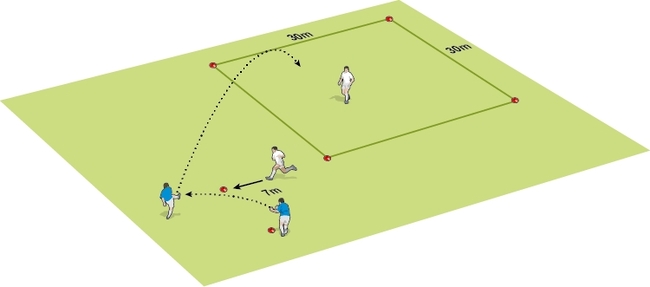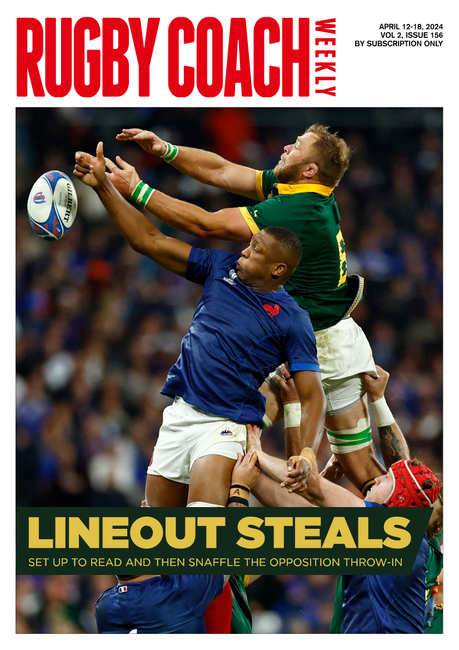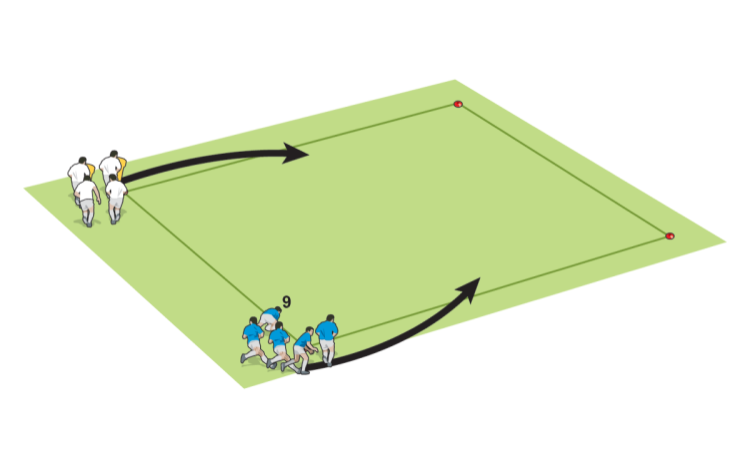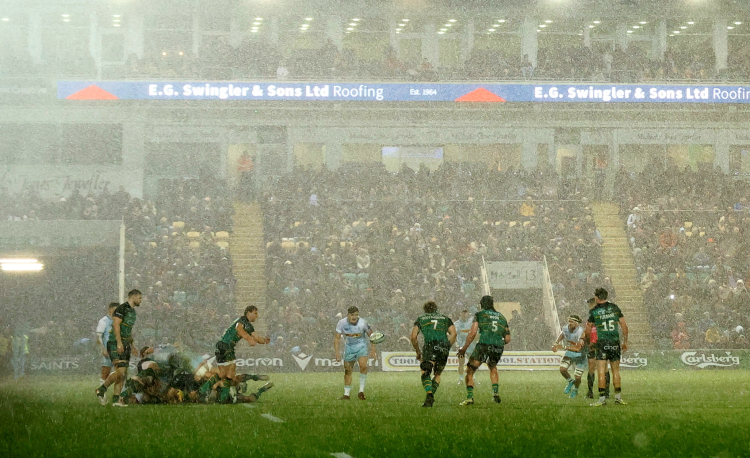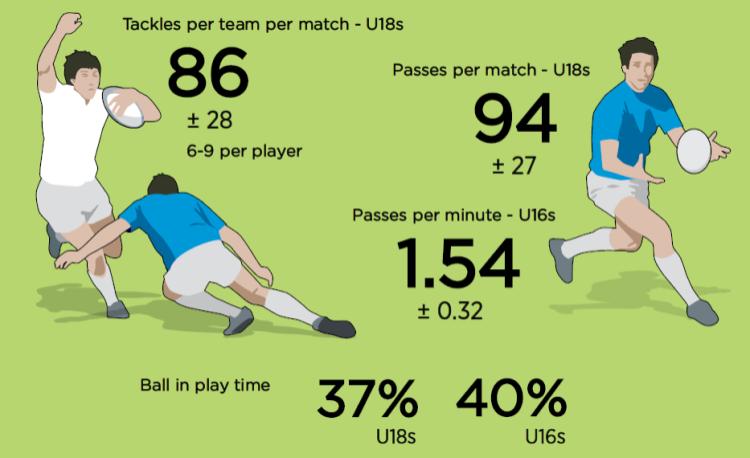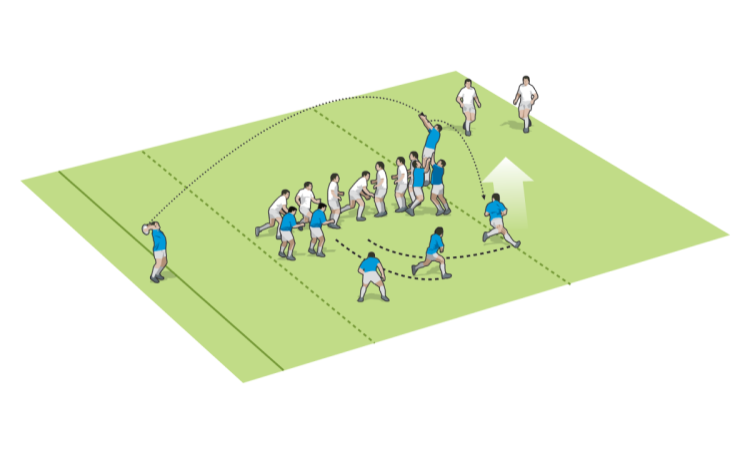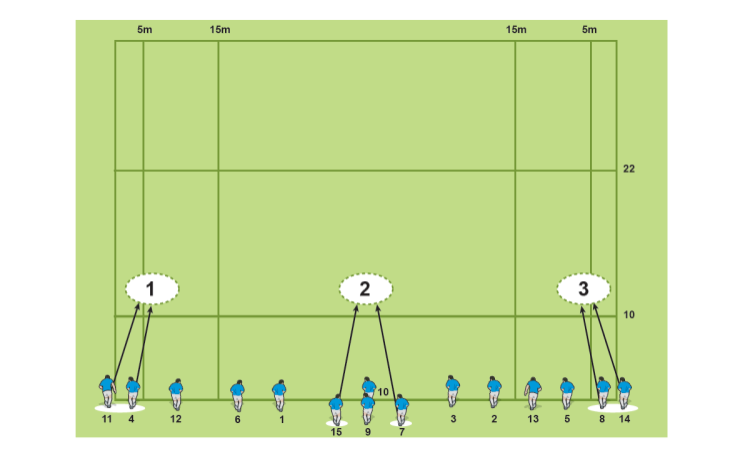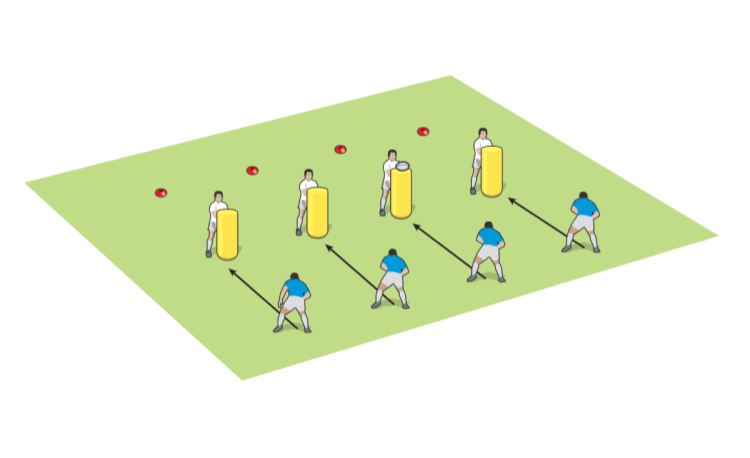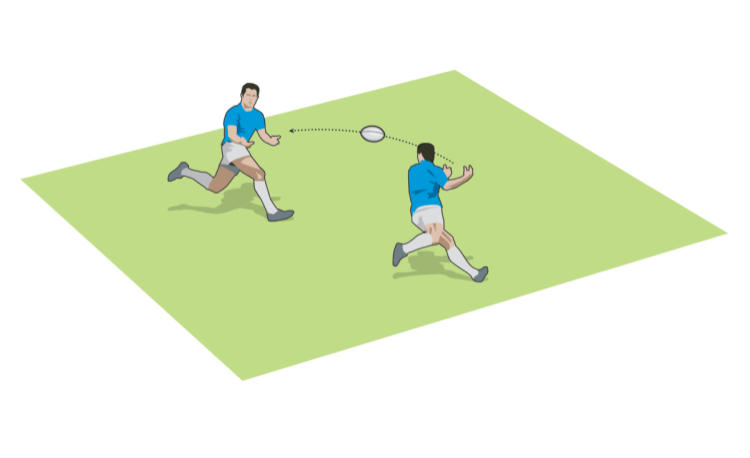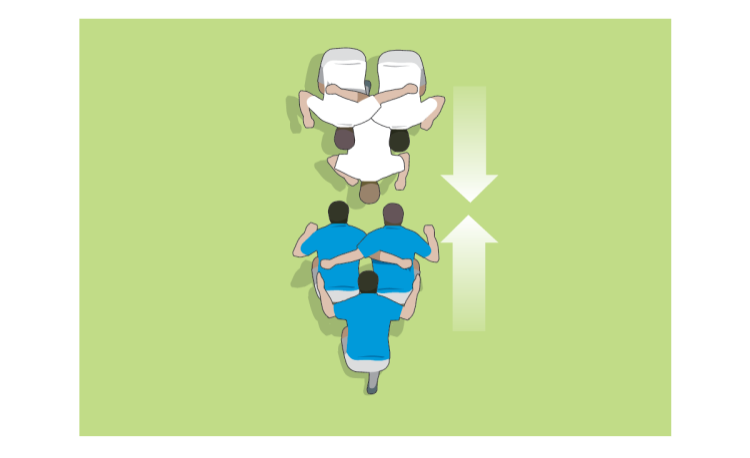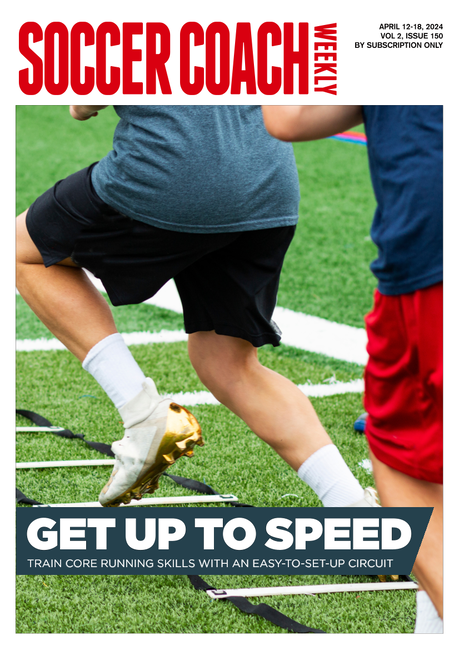You are viewing
1 of your 2 free articles
Know their kicking game: boxes and bombs
Tacticsby Rob Hoadley
By reading their specific kicking cues, your players can be in position to receive different types of kick. Know the signs for high ball kicks from their 9 or 10 and be ready to counter.

Some teams will use an immediate low top-spin box kick if they think the offensive wing and 15 are involved in the wide ruck that has been turned over.
Also teams will use a high box into your half in bad conditions.
From a left side (defensive) lineout against a right-footed box kicker, your 9 can start in the 5m channel and use his speed to anticipate and pressure the kick after the pass back to the kicking 9 from the lineout catcher.
From the right side of the field it is more useful to nominate a back row forward towards the back of the lineout to pressure the 9 kick as the player coming from the 5m channel has a poor angle to block a right-footed box kicker.
The blindside winger can read the positioning and set up of their 9 preparing to kick. It will look different from a 9 setting up to pass on the run from a lineout.
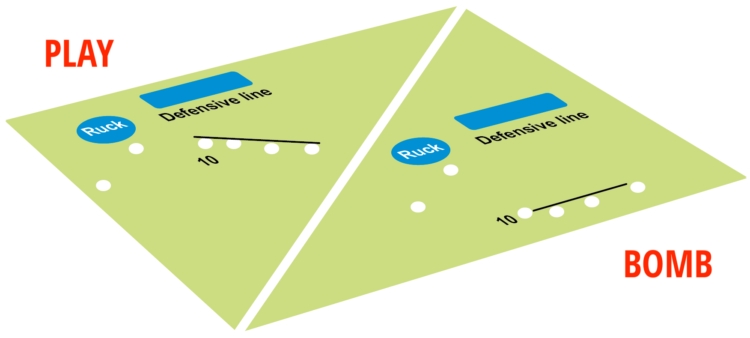
This kick can be executed from set piece but a key cue is that the 10, to maintain control, will be much more static on this kick than for a running option or a kick on the run.
Your wing and 15 must connect quickly so that the non-catcher can communicate whether the catcher has time or not to jump, or can stay down. Also the non-catcher should be close enough to clean after the catch under pressure.
9 BOX KICK

- LEFT HAND SIDE: A flanker comes from the back of the lineout
- RIGHT HAND SIDE: The 9 stands at the front of the lineout to pressurise the right-footed kicker
- In their own 22m, normally from a lineout, but also from rucks inside the 15m lines.
- Also their 9 might use it from a turnover with a ruck close to the touchline.
- The positioning of 9 at base of ruck - his foot placement, body angle and line of vision.
- Their forwards acting as blockers in place around ruck.
- The blindside winger up flat and ready to chase the kick.
Some teams will use an immediate low top-spin box kick if they think the offensive wing and 15 are involved in the wide ruck that has been turned over.
Also teams will use a high box into your half in bad conditions.
Defensive tips
From a left side (defensive) lineout against a right-footed box kicker, your 9 can start in the 5m channel and use his speed to anticipate and pressure the kick after the pass back to the kicking 9 from the lineout catcher.
From the right side of the field it is more useful to nominate a back row forward towards the back of the lineout to pressure the 9 kick as the player coming from the 5m channel has a poor angle to block a right-footed box kicker.
The blindside winger can read the positioning and set up of their 9 preparing to kick. It will look different from a 9 setting up to pass on the run from a lineout.
10 BOMB (CONTESTABLE HIGH BALL)

- PLAY: 10 is flat with attacking line ready to take a pass.
- BOMB: 10 is in the pocket near or behind the ruck, and deeper than normal. The outside backs are flat, ready to chase.
- Any set piece or phase play, mainly into your half of the field.
- Their 10 in the pocket from phase play, which is deep and nearly behind the ruck.
- Their centres up flat to chase.
Defensive tips
This kick can be executed from set piece but a key cue is that the 10, to maintain control, will be much more static on this kick than for a running option or a kick on the run.
Your wing and 15 must connect quickly so that the non-catcher can communicate whether the catcher has time or not to jump, or can stay down. Also the non-catcher should be close enough to clean after the catch under pressure.
Related Files
Vol-1-Issue-409-RCW-part-2-know-their-kicking-game-boxes-and-bombs.pdfPDF, 192 KB
Newsletter Sign Up
Coaches Testimonials

Gerald Kearney, Downtown Las Vegas Soccer Club

Paul Butler, Florida, USA

Rick Shields, Springboro, USA

Tony Green, Pierrefonds Titans, Quebec, Canada
Subscribe Today
Be a more effective, more successful rugby coach
In a recent survey 89% of subscribers said Rugby Coach Weekly makes them more confident, 91% said Rugby Coach Weekly makes them a more effective coach and 93% said Rugby Coach Weekly makes them more inspired.
Get Weekly Inspiration
All the latest techniques and approaches
Rugby Coach Weekly offers proven and easy to use rugby drills, coaching sessions, practice plans, small-sided games, warm-ups, training tips and advice.
We've been at the cutting edge of rugby coaching since we launched in 2005, creating resources for the grassroots youth coach, following best practice from around the world and insights from the professional game.
